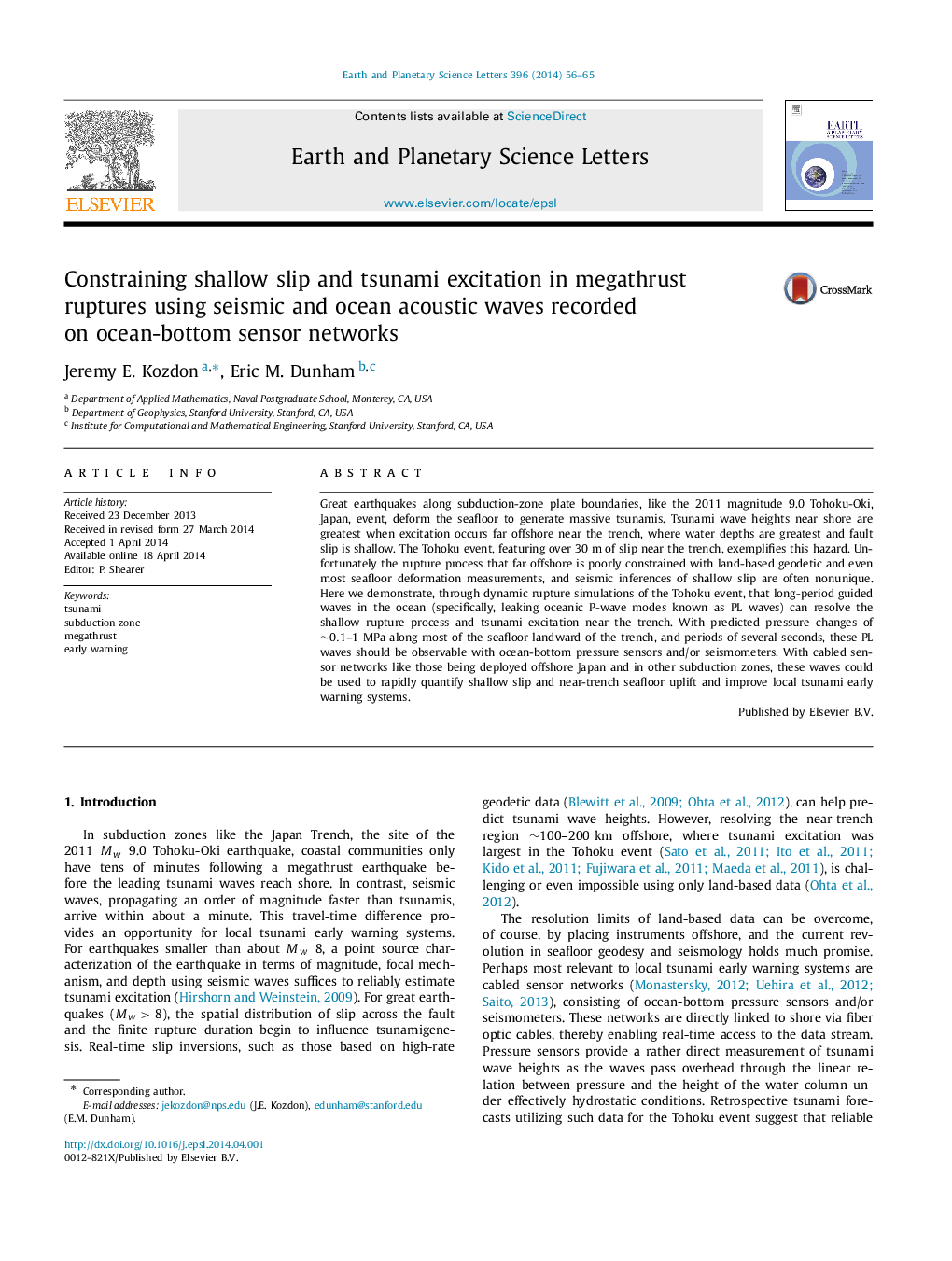| Article ID | Journal | Published Year | Pages | File Type |
|---|---|---|---|---|
| 6429530 | Earth and Planetary Science Letters | 2014 | 10 Pages |
â¢We model seismic and ocean acoustic waves from the 2011 Tohoku earthquake.â¢Shallow slip and near-trench seafloor uplift excite leaking P waves in the ocean.â¢PL wave amplitudes are correlated to near-trench tsunami excitation.â¢PL waves can be detected with seafloor pressure sensors for tsunami early warning.
Great earthquakes along subduction-zone plate boundaries, like the 2011 magnitude 9.0 Tohoku-Oki, Japan, event, deform the seafloor to generate massive tsunamis. Tsunami wave heights near shore are greatest when excitation occurs far offshore near the trench, where water depths are greatest and fault slip is shallow. The Tohoku event, featuring over 30 m of slip near the trench, exemplifies this hazard. Unfortunately the rupture process that far offshore is poorly constrained with land-based geodetic and even most seafloor deformation measurements, and seismic inferences of shallow slip are often nonunique. Here we demonstrate, through dynamic rupture simulations of the Tohoku event, that long-period guided waves in the ocean (specifically, leaking oceanic P-wave modes known as PL waves) can resolve the shallow rupture process and tsunami excitation near the trench. With predicted pressure changes of â¼0.1-1 MPa along most of the seafloor landward of the trench, and periods of several seconds, these PL waves should be observable with ocean-bottom pressure sensors and/or seismometers. With cabled sensor networks like those being deployed offshore Japan and in other subduction zones, these waves could be used to rapidly quantify shallow slip and near-trench seafloor uplift and improve local tsunami early warning systems.
